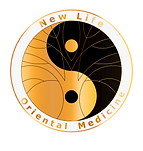Acupuncture
Acupuncture is an ancient Chinese medical technique with a rich history dating back thousands of years.
Acupuncture was devised in China before circa 2500 BCE and gradually spread to other parts of the world by the late 20th century. Fu Xi, who lived around circa 3000 BC, is believed to be its founder. However, the foundations of the Traditional Chinese Medicine (TCM) approach to acupuncture, including concepts of yin, yang, and qi, emerged between circa 100 BCE and circa 100 CE. Over time, acupuncture evolved into the evidence-based healthcare intervention we recognize today.
Principles of Acupuncture:
Meridians: Qi flows through 12 regular meridians or pathways and 8 extraordinary meridians in the body, each associated with a major organ (such as the liver or kidney) and a functional system.
Acupoints: Acupuncture involves inserting fine needles into specific points on the body, affecting the distribution of yin and yang along these meridians.
Depth and Techniques: Needles are typically inserted 3 to 10 mm (0.1 to 0.4 inches) deep, but some procedures may require deeper insertions.
Treatment Goals: The goal is to enable qi to flow freely and harmoniously, restoring balance and health.
Application:
Acupuncture needles can be twisted, twirled, or connected to a low-voltage alternating current during treatment.
Interestingly, needles may be inserted at a considerable distance from the target point, demonstrating the interconnectedness of meridians.
Successive points on a specific meridian can influence diverse areas or conditions.
In summary, acupuncture is a fascinating blend of ancient wisdom, philosophy, and practical application. Its enduring legacy continues to benefit people worldwide, offering relief from pain, disease, and improved well-being.
For more in-depth exploration, you can refer to The Yellow Emperor’s Classic of Internal Medicine from the Han Dynasty.


